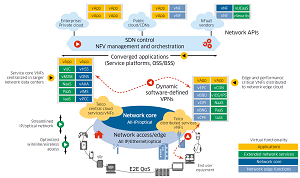News
Following OpenDaylight Update, Study Shows Benefits of Next-Gen Networking
A recent study indicated the young software-defined networking (SDN) technology and its sidekick, network functions virtualization (NFV), "could be as significant as the introduction of IP networks themselves." The study emerged just two days after a new release of the OpenDaylight SDN platform.
OpenDaylight, designed to further the adoption and usage of SDN and related new-age networking technologies, enables greater network programmability and provides a solid foundation for different kinds of NFV implementations.
OpenDaylight, a collaborative project under the direction of the Linux Foundation, last week announced its third release, Lithium.
The new release features dozens of new features concerning security, automation and more, new and improved APIs, new protocols, support for virtualized and cloud environments and more.
"End users have already deployed OpenDaylight for a wide variety of use cases from NFV, network on demand, flow programming using OpenFlow and even Internet of Things," said exec Neela Jacques in a statement. "Lithium was built to meet the requirements of the wide range of end users embedding OpenDaylight into the heart of their products, services and infrastructures. I expect new and improved capabilities such as service chaining and network virtualization to be quickly picked up by our user base. We are really happy to see the interest the Telco/NFV community has shown in ODL."
 [Click on image for larger view.] Lithium (source: OpenDaylight project).
[Click on image for larger view.] Lithium (source: OpenDaylight project).
And that Telco community is set to realize tremendous benefits from SDM and NFV, according to the brand-new study published as a white paper by Arthur D. Little and Bell Labs.
Titled "Reshaping the future with NFV and SDN," the white paper (available for free download as a PDF upon providing registration information) seeks to measure the impact of new technologies on carriers and their networks, with a focus on Europe.
While the general populace benefits from the new-age networking technologies with more flexible services, faster product and service introductions and a better user experience, the benefits to carriers are even better, the study indicates.
 [Click on image for larger view.] Future Architecture of the Carrier Network Enabled by SDN and NFV (source: Arthur D. Little and Bell Labs).
[Click on image for larger view.] Future Architecture of the Carrier Network Enabled by SDN and NFV (source: Arthur D. Little and Bell Labs).
"This next-generation networking will significantly change the status quo," the study states. "That's because being able to expose and manipulate network resources on demand -- and at a granular level -- will spur service innovation and allow richer collaborations between customers and providers to emerge. At the same time, it will enable a new class of competitors to materialize, creating uncertainty about who will really gain from these new services."
However, in order to gain the greatest value from the new approach, carriers need to transform their networks from disparate pieces tied together into one streamlined, automated system, borrowing ideas from cloud players.
The successful adopters of the new technologies will adapt their business models, engage with others for standards, involve suppliers early in the process, develop alliances and joint ventures along the airline model and formulate an aggressive strategy for retiring legacy services, the white paper concludes.
"A lot is at stake," the study says. "And as in any major disruption, there will be winners and losers. We believe that the winners in this case will be the carriers that:
- Move early and purposefully.
- Co-create the future with lead
customers and partners.
- Take the opportunity to not only
virtualize and automate their
networks, but also thoroughly
converge and streamline them.
About the Author
David Ramel is an editor and writer at Converge 360.